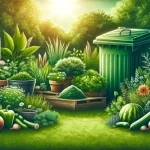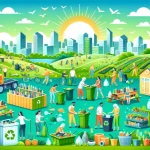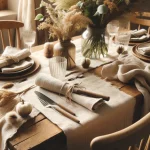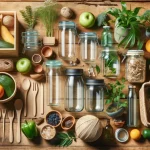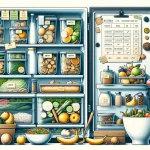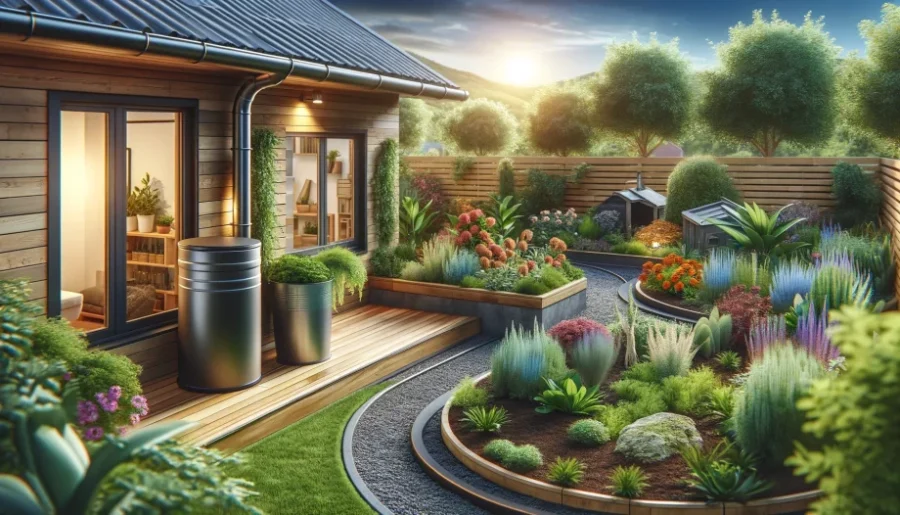
Ready to dive into the world of water conservation in a zero-waste home?
It’s all about making small changes with big impacts, from fixing leaks to harvesting rainwater.
Join us on our journey to save every precious drop and create a sustainable future.
Key Takeaways:
Water conservation in a zero-waste home involves reducing water usage through practical steps like fixing leaks, using water-efficient appliances, and collecting rainwater. These actions help preserve natural resources, lower utility bills, and support a sustainable lifestyle.
Water Conservation in a Zero-Waste Home: Every Drop Counts
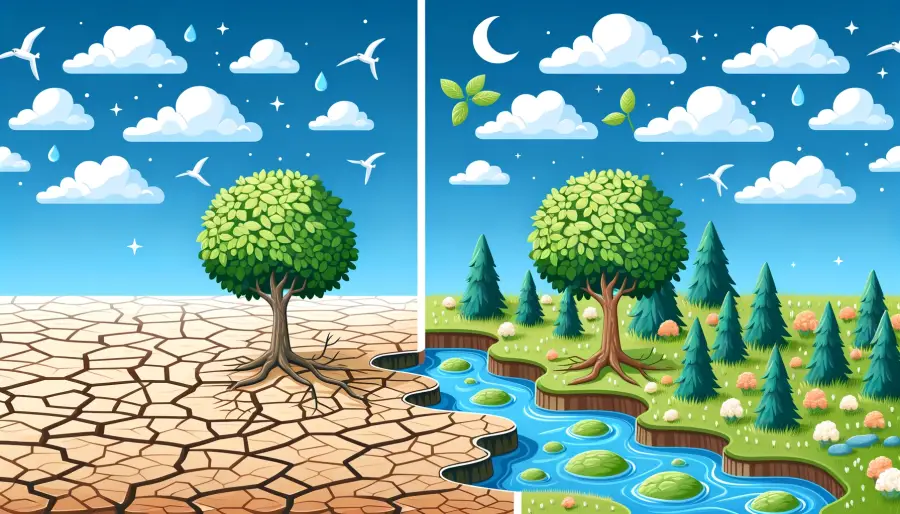
Water is precious, and in our journey towards a zero-waste lifestyle, conserving it is key.
Small changes in our daily routines can lead to big savings in water usage. Let’s explore how we can make every drop count.
The Importance of Water Conservation
Conserving water is not just about saving money on your water bill; it’s about preserving a vital resource for future generations. Learn why every gallon saved matters.
Zero Waste and Water Conservation: A Perfect Match
Discover how adopting a zero-waste lifestyle can lead to significant water savings.
From reducing plastic bottle usage to minimizing food waste, every step towards zero waste contributes to water conservation.
Small Changes, Big Impact
Find out how simple actions like fixing leaks, taking shorter showers, and using rain barrels can add up to substantial water savings.
Start making a difference today with these easy tips.
Section 1: Understanding Water Usage in the Home
Ever wonder how much water we use at home? It’s more than you might think.
On average, each person uses about 80-100 gallons of water per day in the United States.
Let’s dive into where all that water goes and what we can do about it.
| Appliance/Activity | Average Water Usage |
|---|---|
| Washing Machine (per load) | 15-45 gallons |
| Toilet Flush | 1.6-7 gallons |
| Shower (per minute) | 2-5 gallons |
| Dishwasher (per load) | 4-10 gallons |
The Big Water Guzzlers: Washing Machines, Toilets, and Showers
Our homes are full of water-hungry appliances, but some are thirstier than others. Washing machines, toilets, and showers are the main culprits:
- Washing Machines: A single load can use up to 40 gallons of water! Opting for newer, more efficient models can cut that number in half.
- Toilets: Each flush can use up to 7 gallons, depending on the model. Low-flow toilets can significantly reduce this amount.
- Showers: A 10-minute shower can use 50 gallons of water. Cutting shower time and using low-flow showerheads can make a big difference.
The Ripple Effect: Water Waste and Future Generations
Wasting water doesn’t just hit our wallets; it impacts the environment and future generations.
Excessive water use depletes natural resources, harms ecosystems, and contributes to water scarcity.
By being mindful of our water usage, we can help ensure there’s enough clean water for everyone, now and in the future.
Section 2: Practical Tips for Reducing Water Consumption
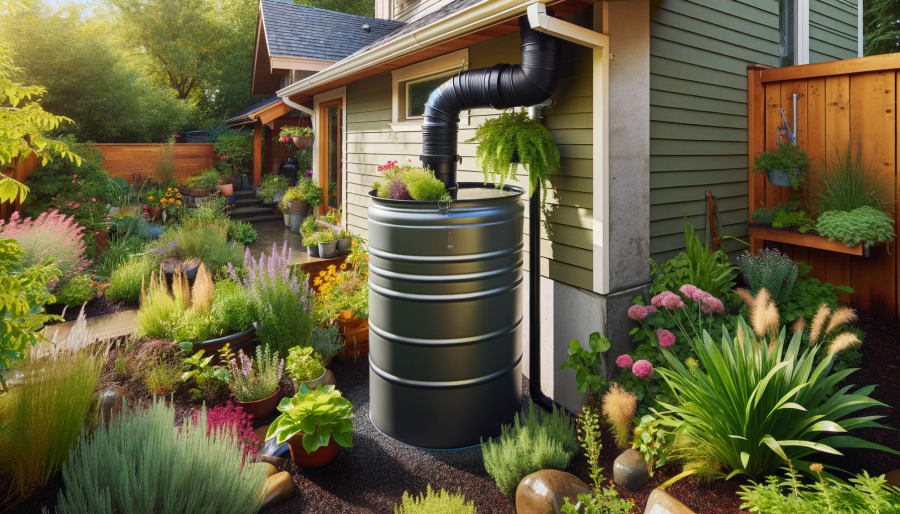
Want to save water and money? You’re in the right place. Check out these practical tips to cut down on your water usage without cramping your style.
| Tip | Water Savings |
|---|---|
| Fixing a Leaky Faucet | Up to 3,000 gallons/year |
| Taking Shorter Showers | 2.5 gallons/minute saved |
| Running Full Loads | Varies, but significant |
| Installing Low-Flow Fixtures | 25-60% reduction in usage |
Less Water in Daily Chores
Laundry and dishes don’t have to be water wasters. Here’s how to lighten their load:
- Washing Machines: Wait until you have a full load before running your machine.
- Bonus tip: Use cold water to save on heating and reduce your energy bill too!
- Dishwashers: Just like with laundry, wait for a full load. And skip the pre-rinse – modern dishwashers can handle it.
Shorter Showers & Low-Flow Fixtures
The bathroom is a hotspot for water use. Here’s how to make a splash with savings:
- Showers: Keep ’em short and sweet. Aim for 5 minutes or less. Every minute less can save up to 2.5 gallons of water.
- Fixtures: Install low-flow showerheads and faucet aerators. They reduce water flow without sacrificing pressure, so you won’t even notice the difference – except on your water bill.
Fixing Leaks: A Drip Worth Stopping

A small leak can waste a lot of water over time. Here’s what to do:
- Faucets & Toilets: Check regularly for drips and running toilets. A leaky faucet can waste up to 3,000 gallons a year, and a running toilet can waste even more.
- DIY Fixes: Many leaks are easy to fix yourself with a few tools and a trip to the hardware store. Don’t let those drips drain your wallet!
Ready to put these tips into action? Stay tuned for more ways to conserve water and embrace a zero-waste lifestyle in our next section!
Section 3: Innovative Water Conservation Methods
Ready to take your water-saving game to the next level? Check out these innovative methods that can help you conserve even more water in your zero-waste home.
| Method | Description |
|---|---|
| Rain Barrel Systems | Collects rainwater for reuse |
| Grey Water Systems | Reuses water from showers, sinks, etc. |
| High-Efficiency Appliances | Uses less water per cycle/use |
Rain Barrel Systems: Catching Every Drop
- What’s the Deal? Rain barrels collect rainwater from your roof that you can use to water your plants. It’s like having your own mini-reservoir!
- Why It Rocks: You’ll reduce your reliance on irrigation systems and tap water, which is great for your water bill and the environment.
- Getting Started: Setting up a rain barrel is easier than you might think. You can find kits at most home improvement stores or DIY it with some basic materials.
Grey Water Systems: From Drain to Garden
- What’s the Deal? Grey water systems take used water from showers, sinks, and washing machines and repurpose it for things like flushing toilets or watering gardens.
- Why It Rocks: You’ll be giving water a second life, reducing your freshwater use, and keeping your garden green without extra irrigation.
- Getting Started: There are simple greywater systems you can install yourself, or you can go for a more advanced setup with the help of a professional.
High-Efficiency Appliances: Smart Savings
- What’s the Deal? High-efficiency toilets and clothes washers use less water per use than standard models, without skimping on performance.
- Why It Rocks: You’ll save liters of water with every flush and wash, adding up to big savings over time.
- Getting Started: Look for appliances with the EPA’s WaterSense label or ENERGY STAR certification for maximum efficiency.
By embracing these innovative water conservation methods, you’ll not only save water but also support a sustainable, zero-waste lifestyle.
Stay tuned for more tips on how to make every drop count in your home!
Section 4: Zero Waste Practices That Conserve Water
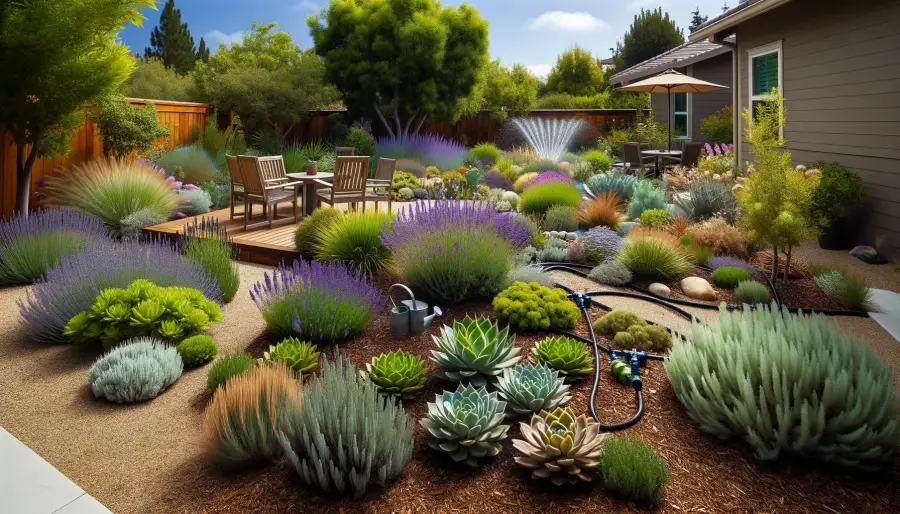
Going zero waste is not just about reducing trash—it’s also about saving water. Here are some simple yet effective zero-waste practices that can help you conserve water in your daily life.
| Practice | Water Conservation Benefit |
|---|---|
| Composting Food Scraps | Reduces need for garbage disposal |
| Using Solid Soap | Reduces water usage in production and use |
| Ditching Bottled Water | Saves water used in production |
Composting Food Scraps: Turning Waste into Water Savings
- What’s the Deal? Instead of using a garbage disposal, compost your food scraps. This not only reduces waste but also conserves the water needed to run the disposal.
- Why It Rocks: Composting enriches your garden soil, reduces the need for chemical fertilizers, and saves water by improving soil moisture retention.
- Getting Started: Set up a compost bin in your backyard or use a worm composting system if you’re short on space.
Using Solid Soap: A Simple Swap with Big Impact
- What’s the Deal? Switch from liquid soap to solid soap bars for handwashing, showering, and even cleaning.
- Why It Rocks: Solid soap uses less water in its production and packaging, and it encourages more mindful water use while lathering up.
- Getting Started: Look for package-free soap bars at your local zero-waste store or farmers market.
Ditching Bottled Water: Tap into Savings
- What’s the Deal? Choose tap water over bottled water to reduce plastic waste and save the water used in bottling.
- Why It Rocks: Tap water is often just as safe as bottled water, and using a reusable bottle can save thousands of plastic bottles over time.
- Getting Started: Invest in a good-quality reusable water bottle and a water filter if needed for taste or safety.
By incorporating these zero-waste practices into your routine, you’ll not only save water but also contribute to a healthier planet. Stay tuned for more ways to make every drop count in our journey toward a zero-waste, water-wise lifestyle!
Section 5: The Broader Impact of Water Conservation

Water conservation isn’t just about saving water; it’s about creating a ripple effect that benefits our planet and future generations. Here’s how:
Reducing Carbon Footprint: The Energy-Water Connection
- What’s the Deal? Saving water also saves energy. It takes a lot of energy to treat, pump, and heat water, so using less water means using less energy and producing fewer greenhouse gas emissions.
- Why It Rocks: By conserving water, we can reduce our carbon footprint and help fight climate change. It’s a win-win for you and the planet!
- The Numbers: In California, about 20% of statewide electricity and 30% of non-power plant natural gas are used for water-related activities. Water conservation programs can be as cost-effective as energy efficiency programs in reducing electricity use and greenhouse gas emissions.
Supporting Local Water Supply: Every Drop Counts
- What’s the Deal? Conserving water helps maintain local water levels, ensuring there’s enough clean water for everyone.
- Why It Rocks: Healthy water levels support local ecosystems, agriculture, and communities. Plus, it reduces the need for costly water importation or new infrastructure.
- The Ripple Effect: By using water wisely, we contribute to the sustainability of our local water supply and the overall health of our environment.
Promoting Sustainable Living: Water Conservation as a Lifestyle
- What’s the Deal? Water conservation is a key component of a zero-waste lifestyle. It’s all about using resources efficiently and responsibly.
- Why It Rocks: Embracing water-saving habits supports sustainable living, reduces pollution, and preserves natural habitats. It’s about taking care of our planet for ourselves and future generations.
- The Bigger Picture: By integrating water conservation into our daily lives, we can collectively make a significant impact on combating climate change and promoting a healthier planet.
Conserving water is more than just a drop in the bucket; it’s a vital step towards a sustainable and healthy future. Let’s all do our part to make every drop count and pave the way for a better tomorrow!
FAQs: Water Conservation in Zero Waste Homes
Water is a precious resource, and conserving it is a crucial aspect of living a zero-waste lifestyle. Here are some common questions and answers to help you save water at home:
Q. What are the 5 methods of water conservation?
A. The five methods include collecting rainwater, using water-efficient appliances, fixing leaks, xeriscaping, and mulching to retain soil moisture.
Q. What is an example of how water conservation can be done at home?
A. An example is using a rain barrel to collect rainwater for watering plants, reducing the need for tap water for irrigation.
Q. What are 3 water conservation tips for using water indoors?
A. Three tips include taking shorter showers, running full loads in washing machines and dishwashers, and fixing any leaky faucets or pipes.
Q. How can we conserve residential water?
A. We can conserve residential water by implementing water-saving technologies, practicing water-efficient habits, and using alternative water sources like rainwater.
Q. What action could residential homeowners do to have the greatest impact on water conservation?
A. Upgrading to water-efficient appliances and fixtures, such as low-flow toilets and showerheads, can have the greatest impact on water conservation.
Q. What are the strategies for water efficiency?
A. Strategies include regular maintenance of water systems, using water-saving devices like faucet aerators, and adopting behavioral changes such as turning off the tap while brushing teeth.
Conclusion: A Step Towards Sustainability: Water Conservation in a Zero-Waste Home
In a world where every resource counts, water conservation stands out as a crucial element of a zero-waste lifestyle.
It’s about recognizing the value of every drop and understanding the impact our daily habits have on the planet.
By adopting a mindful approach to water use, we can make significant strides towards sustainability and environmental protection.
Join us as we explore simple yet impactful steps toward conserving water in a zero-waste home.
Recap of the Importance of Water Conservation in a Zero-Waste Home
Water is the lifeline of our existence, yet it’s one of the most taken-for-granted resources.
In a zero-waste home, water conservation is not just about saving water; it’s about reducing waste, minimizing energy consumption, and preserving natural ecosystems.
It’s a holistic approach that aligns with the principles of sustainability and responsible living.
Adopt Simple Steps and Make Small Changes for a Big Impact
Small changes can lead to big impacts when it comes to water conservation.
Simple actions like fixing leaks, using a rain barrel, and turning off the tap while brushing teeth can collectively save thousands of gallons of water annually.
By integrating these habits into our daily routines, we can significantly reduce our water footprint and contribute to a more sustainable future.
Call to Action for Readers to Start Conserving Water and Contributing to Environmental Protection
The journey towards water conservation starts with each one of us. It’s a call to action for everyone to play their part in protecting this vital resource.
By being mindful of our water usage, adopting water-saving technologies, and spreading awareness, we can make a meaningful difference.
Let’s commit to conserving water and safeguarding our environment for generations to come.
Read more: Mastering Zero-Waste Living: 7 Easy Tips and Tricks
Further Reading/Resources:
For those looking to dive deeper into water conservation and sustainable practices, here are some valuable resources:
- Water-Saving Tips:
- EPA WaterSense: Offers a wealth of information on water-efficient products and simple tips to save water.
- Water Use It Wisely: Provides 100+ ways to conserve water, including indoor and outdoor tips.
- DIY Rain Barrel Setup:
- The Old Farmer’s Almanac: A guide to making your own rain barrel for collecting rainwater.
- Eartheasy: Offers step-by-step instructions for setting up a rain barrel.
- Grey Water System Installation:
- Greywater Action: Provides information on greywater systems, including how to install and maintain them.
- Elemental Green: Discusses the benefits of installing a greywater system and provides installation tips.
- Environmental Protection Agencies and Guidelines:
- United States Environmental Protection Agency: Offers guidelines and information on water conservation efforts.
- The Water Project: Provides tips and strategies for water conservation.
By exploring these resources, you can gain a deeper understanding of how to implement water-saving practices in your home and contribute to a more sustainable and environmentally friendly lifestyle.

